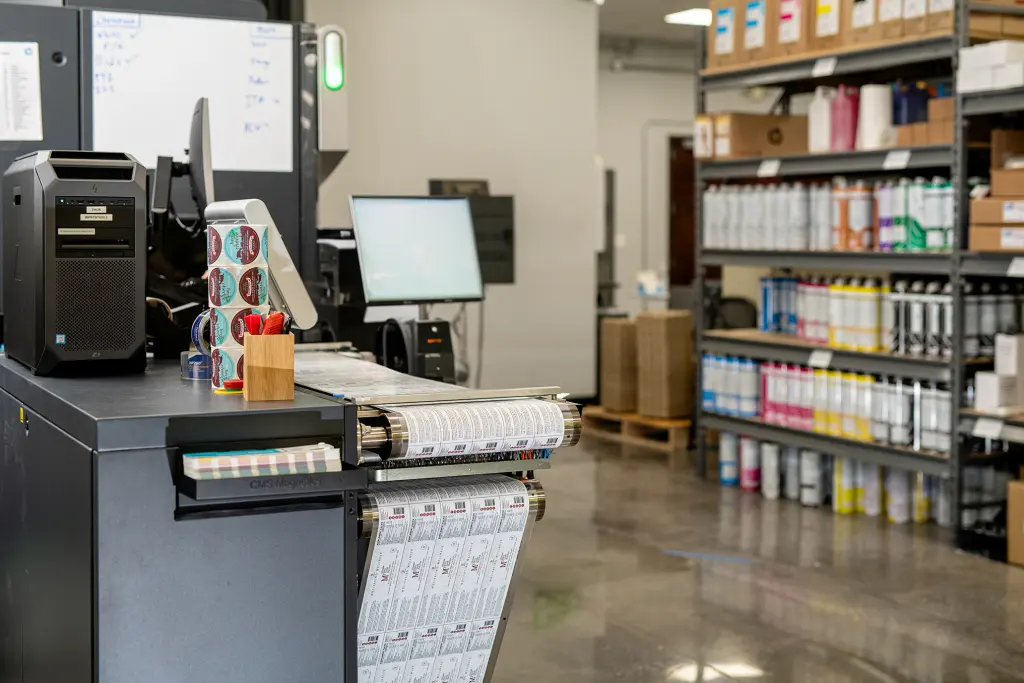In the world of printing, where color accuracy can make or break a project, press proofs play a pivotal role in ensuring that the final product aligns with the customer’s expectations. Whether you’re producing packaging, promotional materials, or brand-critical assets, getting the color right is essential. That’s where press proofs come into play. These proofs allow you to see a true-to-life representation of what the final printed piece will look like before going into full-scale production.
What Are Press Proofs?
Press proofs are test prints made on the exact substrate that will be used for the final product. These are not digital mock-ups or conceptual representations; they are actual prints using the materials and processes intended for the end product. Press proofs are particularly useful when working on flexible packaging like pouches or stand-up bags where color and texture accuracy are paramount.
In many cases, brands demand exact color matches—whether it’s for maintaining consistency in logo colors, brand identity, or specific design elements. Press proofs allow you to review and approve the colors before committing to mass production, significantly reducing the risk of costly errors.
While finished mock-ups may not be available, press proofs offer the next best thing. They provide a close representation of how your final product will look, helping you to gauge both the appearance and quality of the print. For flexible packaging, in particular, this is crucial since the colors may change once the print is laminated and the adhesive is applied.

Why Use Press Proofs?
The value of press proofs lies in their ability to replicate the final outcome with high accuracy. These proofs are created on the actual substrate you plan to use, such as plastic or paper, offering a near-final representation of the product. Traditional printing methods, like flexographic printing, require the creation of custom plates for each print run, making it difficult to preview the final product accurately. With digital printing, however, press proofs can be produced directly on the substrate, offering a unique advantage that minimizes uncertainty.
Moreover, lamination can affect how colors are perceived, so when you receive a press proof, you’re also provided with a laminate to overlay on the printed web. This allows you to preview the final product’s look and feel more accurately, taking into account the impact of the adhesive and lamination process. The subtle color shifts that occur during lamination can make a significant difference in the final result, especially for projects that require critical color precision.
Color Accuracy and Brand Integrity
One of the biggest advantages of press proofs is their importance in ensuring color accuracy. Brands often have strict guidelines regarding color, and even slight deviations can lead to dissatisfaction. Press proofs help you avoid these pitfalls by letting you confirm the exact color output on the actual material. This is particularly essential when dealing with critical brand colors that need to remain consistent across different product lines or packaging formats.
Even if the colors you’re working with aren’t Pantone-matched or don’t require extreme precision, press proofs provide peace of mind. By previewing the actual colors on the intended substrate, you can catch any potential issues early and adjust accordingly. Press proofs act as a safeguard, ensuring that what you see on-screen or on paper matches what you’ll see on the final product.
The Press Proof Process
The process of creating a press proof begins with a digital print directly onto the substrate. Unlike a standard digital proof, which is often just a paper printout, a press proof gives you the real deal—your design on the same material that will be used for production. Once the proof is printed, you’ll have the chance to inspect the colors and design. If you’re happy with the result, you can approve the proof and move forward with full production. If adjustments are needed, the proof gives you the opportunity to tweak the design or color profile before committing to a larger run.
The Cost of Not Using Press Proofs
While press proofs are an additional step in the printing process, they are well worth the investment. Without press proofs, brands run the risk of going into full production only to find that the colors are off or the final product doesn’t look as expected. In such cases, reprinting can be extremely costly in terms of both time and money. Press proofs mitigate these risks by providing a chance to make adjustments early on, saving you from potential headaches down the line.
Conclusion: Press Proofs as a Key to Success
In any printing project, particularly those that involve color-critical work, press proofs offer an invaluable preview of the final product. They allow you to see exactly how the colors will look on the chosen material, providing confidence that the end result will meet your expectations. Whether you’re dealing with brand-specific colors or intricate designs, a press proof ensures you can move forward with confidence, knowing that your print project will turn out exactly as planned.
If color accuracy is essential for your project, don’t leave anything to chance. Invest in a press proof and ensure your final product is picture-perfect.


